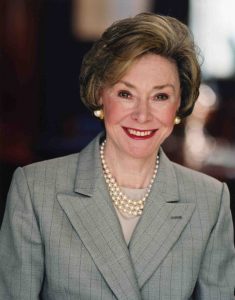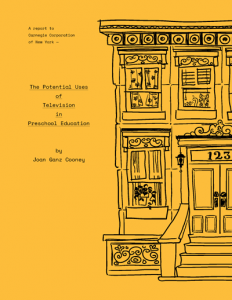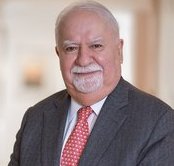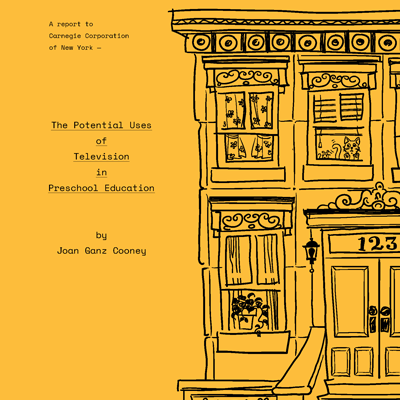
You may have heard that television programming in the 1960s was called a “vast wasteland.” by then-FCC Chairman Newton Minow. From the beginning, Lloyd Morrisett and I were both convinced that television – which was capturing the attention of children as nothing else was – did have the power to educate as well as to entertain and we set out to prove it.
It was back in 1966 when I wrote my original report, The Potential Uses of Television in Preschool Education. This study was supported by Lloyd, Vice President at Carnegie Corporation, who found himself concerned by the very power and appeal that a television screen had over his own young daughter—at three years old, she would turn on the TV early in the morning and sit down to watch test patterns as she waited for something to come on. She, like many other young children, had the capacity to memorize all the advertising jingles they heard. We asked the question, “Could that fascination with television be transformed into something that could teach them how to read?” So, a simple conversation over dinner with friends turned into an opportunity to produce this report, a proposal to the Carnegie Corporation, that launched Sesame Street.

Back then, I gathered the smartest, most talented people I could find to produce what I wanted to become a television program for children that could positively impact their lives—especially those young children who had no access to early preschool education. We knew that it would also be important to attract the mothers who were often at home during the day, so they would enjoy the show and talk about it with their children. I was thrilled when the show premiered on PBS in November 1969, and even more thrilled when the research showed that children who had watched the show gained critical kindergarten readiness skills over those who had not. I am proud that the show, and the company that we founded, The Children’s Television Workshop, (renamed Sesame Workshop in 2000), continues to make children all over the world smarter, stronger, and kinder!
During the 1960s, of course, family lives were quite different from what they are today. More often than not, both parents work outside of the home, and young children have many more entertainment options than ever before. Children from lower-income families in particular need more support and guidance to catch up to the advantages that those from more affluent families enjoy. In 2007, I wanted the Joan Ganz Cooney Center to continue to ask the questions that drove the creation of the show, “How can children learn from emerging technologies?” Smart phones and tablets are everywhere now, and we know children are using them. How can we create content that is beneficial to young children? And what do producers need to know about the varied ways family members engage with these devices separately—and together?
I am thrilled that Sesame Workshop has been able to impact the lives of so many children around the world for the past 50 years. It is my hope that we can continue to make as great an impact in new media as we have with television, and that the Workshop is able to continue to educate and inspire producers, researchers, and policymakers who are helping to shape the lives of young people today.
Joan Ganz Cooney
Co-founder
Sesame Workshop




